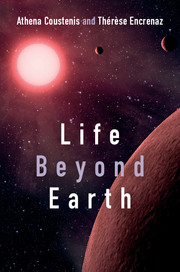Book contents
- Frontmatter
- Contents
- Preface
- 1 Introduction
- 2 What is life and where can it exist?
- 3 Terrestrial planets and their diverging evolutions
- 4 Searching for habitable sites in the outer Solar System
- 5 A revolution in astronomy: the exploration of extrasolar planets
- 6 Extraterrestrial habitable sites in the future
- Further reading
- Index
- Plate Section
2 - What is life and where can it exist?
Published online by Cambridge University Press: 05 October 2013
- Frontmatter
- Contents
- Preface
- 1 Introduction
- 2 What is life and where can it exist?
- 3 Terrestrial planets and their diverging evolutions
- 4 Searching for habitable sites in the outer Solar System
- 5 A revolution in astronomy: the exploration of extrasolar planets
- 6 Extraterrestrial habitable sites in the future
- Further reading
- Index
- Plate Section
Summary
The search for habitable worlds in the Universe entails our understanding of the conditions in which life appeared, survived and developed on Earth. This understanding has been growing consistently since the first geological, atmospheric, oceanographic and biological studies. As stated in The Limits of Organic Life in Planetary Systems, put together by the Committee on the Origins and Evolution of Life of the National Research Council (NRC, 2007):
it is now clear that although terrestrial life is conveniently categorized into million of species, studies of the molecular structure of the biosphere show that all organisms that have been examined have a common ancestry. There is no reason to believe, or even to suspect, that life arose on Earth more than once, or that it had biomolecular structures that differed greatly from those shared by the terrestrial life that we know of today.
Our planet is not blessed everywhere with conditions favourable to human life, but in spite of the harsh and extreme chemical and temperature ranges that living species have to deal with, we have proof today that life thrives on Earth wherever liquid water and energy sources are available. However, other lifeforms may well exist, as has been suggested by some scientific studies. In what follows in this chapter we try to give an overview of terrestrial life and what it requires, touch upon other possibilities and focus on the environmental conditions necessary for the sustainability of life of the standard definition (Earth-like), before we begin our trip across the Solar System and elsewhere in quest of habitable places.
- Type
- Chapter
- Information
- Life beyond EarthThe Search for Habitable Worlds in the Universe, pp. 19 - 84Publisher: Cambridge University PressPrint publication year: 2013
- 1
- Cited by

